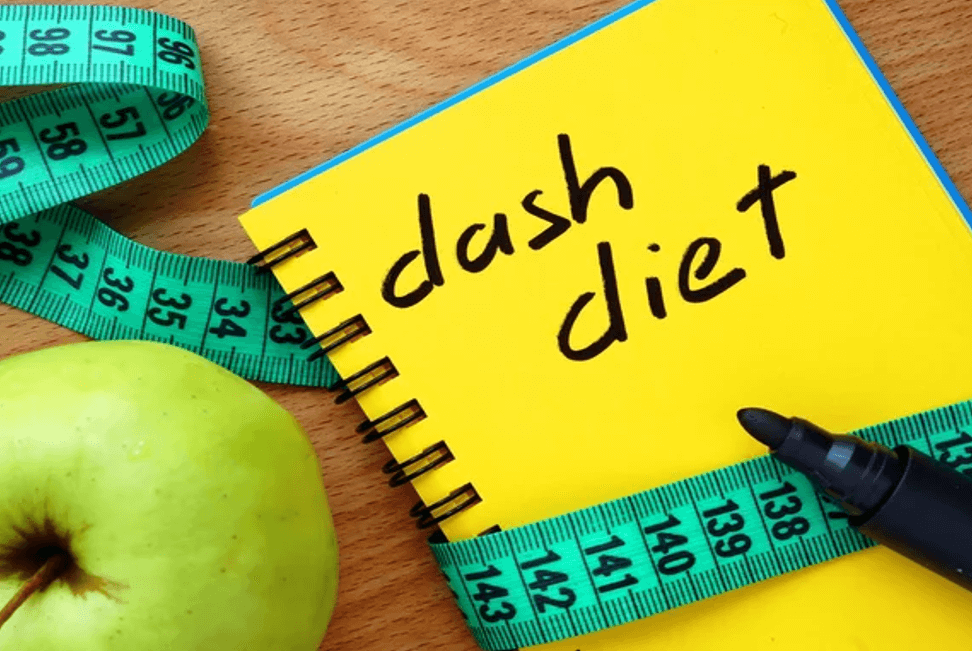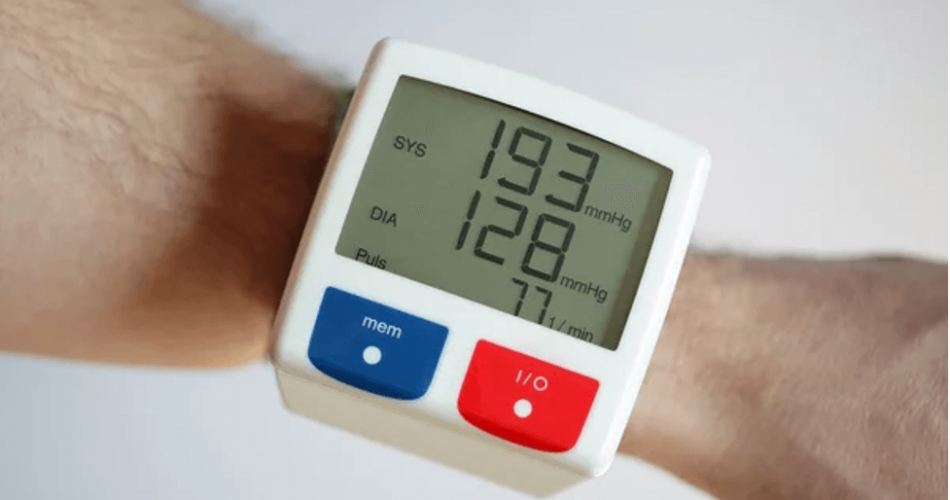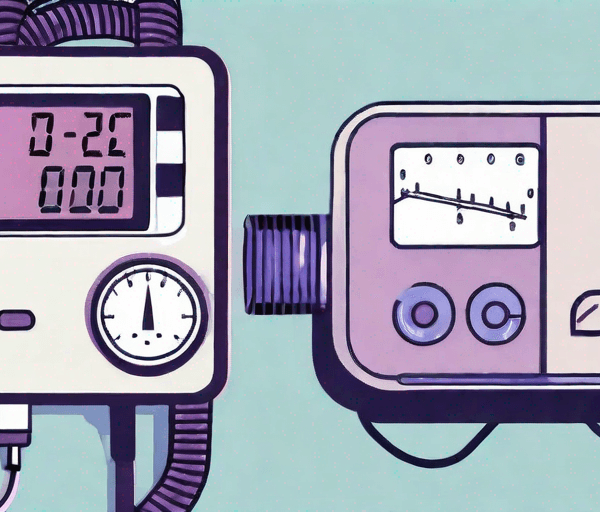Have you noticed a constant elevation of your diastolic blood pressure while your systolic blood pressure is within the normal or usual range?
Generally, blood pressure needs to be controlled if it exceeds the normal blood pressure range.
There are two important numbers in reading your blood pressure results. Systolic blood pressure is the first number that indicates the power exerted on blood vessels when the heart beats to pump out blood to the circulatory system. The diastolic blood pressure is the second number that indicates the power exerted when the heart is resting between beats. For instance, 110/70 bp is a measurement consisting of 110 systolic and 70 diastolic.
Let’s take a deeper dive into understanding how and why you should lower your (diastolic) blood pressure.
Overview
Different blood pressure readings can be observed throughout the day that is influenced by various activities and food intake.
Normal blood pressure ranges from a systolic blood pressure reading of 110-130 mmHg and a diastolic blood pressure reading of 60-70 mmHg. Hence, an increase in the normal blood pressure with a range of 130 to 139 mmHg systolic pressure reading and 80 to 89 mmHg diastolic pressure reading is categorized as high blood pressure also known as hypertension.
Isolated diastolic high BP
Before the various accumulation of evidence and studies about the importance of systolic pressure, diastolic blood pressure was traditionally considered the most important part of blood pressure and was the basis and target of antihypertensive treatment.
First, let’s define some terms (based on the 2017 American College of Cardiology (ACC)/American Heart Association (AHA)):
- Isolated systolic hypertension (ISH) – is a systolic blood pressure of greater than or equal to 130 mmHg in people with a normal diastolic blood pressure of less than 80 mmHg. ISH is more prevalent in the older patient population.
- Isolated diastolic hypertension (IDH) – is a diastolic blood pressure of greater than or equal to 80 mmHg in people with a normal systolic blood pressure of less than 130 mmHg. IDH is more commonly seen in younger patients.
Both isolated systolic and diastolic blood pressure readings can be used to predict the risks of cardiovascular events.
However, you can’t specifically target to lower your systolic or diastolic blood pressure alone. So, if your blood pressure falls in the hypertensive range, it is better to lower your overall blood pressure. Clinical improvement in risk prediction includes both systolic and diastolic blood pressure monitoring.
What are some ways to reduce diastolic blood pressure?
Lifestyle changes and possible pharmacological treatment are beneficial in the management of high diastolic blood pressure. According to a study, most patients having IDH were younger and observed to have a high body mass index (BMI) and are smokers. Hence, being fit, following a prescribed diet, proper exercise training, and quitting smoking are some efficient blood pressure management treatments. If lifestyle changes and diet changes are not enough to lower your blood pressure, your doctor may prescribe the following medications:
- Thiazide diuretics
- Angiotensin converting enzyme inhibitors (ACE)
- Angiotensin II receptor blockers (ARBs)
- Calcium channel blockers (CCB)
Note that most patients have existing maintenance medications for other existing medical conditions. It is important to check for drug-drug interactions when adding an antihypertensive drug to the patient’s treatment regimen. Also, watch out for a sudden drop in blood pressure when given these types of medication.
How can I lower my diastolic blood pressure naturally?

Here are 5 beneficial tips to decrease overall blood pressure naturally:
- Maintain an active lifestyle (increase in aerobic exercises)
Physical exercise reduces blood pressure on exertion and is generally recommended to be done regularly. It was observed that endurance training, resistance training, isometric, and combined training markedly decreased diastolic blood pressure. Shorter endurance training exercise duration at moderate to high intensity was noted to have larger blood pressure reductions.
- Weight reduction
Long-term compliance with the DASH diet and exercise training would help in reducing weight which would lead to a decrease in blood pressure.
- Stress reduction
As a reaction to stress, your body produces hormones that increase blood pressure. It is important to know your stress factors and avoid things that trigger them. Practice deep breathing exercises to reduce stress.
- Avoid smoking
Nicotine content in cigarettes causes an increase in blood pressure. It will be beneficial to taper and stop smoking to prevent an increase in blood pressure.
- Daily blood pressure monitoring
Record and observe your blood pressure trends and consult your doctor to interpret the results for optimal and updated treatment regimen recommendations.
What are the best foods to eat to lower my diastolic blood pressure?

- DASH diet
Dietary Approaches to Stop Hypertension (DASH) diet is a suitable and effective nutritional diet strategy to lower blood pressure that is composed of:
- Vegetables
- Fruits
- Fish
- Reduced portions of red meats
- Reduced sugar-sweetened foods
- Reduced sugar-sweetened beverages
- Low-fat dairy products
- Reduced saturated fat and cholesterol
- Add magnesium and potassium-rich food in your diet
Nuts, legumes, and vegetables contain magnesium which has a protective effect against hypertension. Potassium supplementation also showed to reduce blood pressure levels.
- Consume high-fiber food
Foods that are high in fiber such as whole oats, whole barley, legumes, peas, beans, and flax seeds are beneficial in patients with high blood pressure.
- Probiotics
Studies reported the high efficacy of probiotics in reducing diastolic and systolic blood pressure in patients with underlying medical conditions such as diabetes and obesity.
- Reduce salt intake
Since sodium can increase your blood pressure, reduce sodium intake to 1,500 milligrams or preferably less per day.
- Reduce alcohol intake
Alcohol consumption elevates your blood pressure.
Demographics
Isolated diastolic hypertension was observed to cause coronary problems in younger patients while isolated systolic hypertension is a risk indicator in older patients.
According to a recent study with 17, 362 patients, 0.7– 4.5% of healthy children in the United States with an age range of 8 to 18 years had isolated diastolic high blood pressure. These patients were found to be younger females with a low rate of obesity and had a higher resting heart rate.
Risk factors for high diastolic blood pressure
Some common uncontrollable risk factors include age, cardiovascular diseases, and kidney disease.
A 2021 study reported different risk factors of isolated diastolic blood pressure that were predominantly seen in the younger patient population. Patients with IDH were observed to have a high body mass index (BMI) and a smoking history. A study reported a high incidence rate of IDH in younger patient population.
Additionally, there are certain medical conditions that are also risk factors for IDH such as:
- Constrictive pericarditis – a medical condition that decreases diastolic filling leading to increased diastolic pressure and decreased cardiac output.
- Autonomic dysreflexia – a medical condition that results from a spinal cord injury and causes an overreaction of the involuntary nervous system such as high blood pressure (elevation of diastolic pressure greater than 10 mmHg).
Diagnosis and Symptoms
The diagnosis of isolated diastolic blood pressure is mainly based on a blood pressure reading of <130 mmHg/ ≥80 mmHg) accompanied by hypertensive symptoms. Patient-centered factors like age, weight, and medical comorbidities also play a significant part in patient diagnosis.
Patients with hypertension may or may not display symptoms. The following symptoms are observed in high diastolic pressure readings:
- Lightheadedness or dizziness
- Headache
- Increased sweating
- Heart palpitations
- Nausea or feeling like you are about to vomit
- Blurry vision
Causes
Severity and symptoms of hypertension are affected by underlying medical conditions as well as nutritional intake.
Medical conditions that cause high blood pressure:
- Obesity
Obesity causes the heart to exert extra force to pump blood into the body and this may strain the arteries causing the blood pressure to rise.
- Hypothyroidism
Hypothyroidism or underactive thyroid is a common secondary cause of isolated diastolic hypertension. Patients with hypothyroidism demonstrate cardiovascular changes such as a decrease in cardiac output and increased peripheral vascular resistance which is associated with IDH. Effective medication using thyroxine is readily available for the treatment of hypothyroidism.
Complications
Hypertension is known to cause cardiovascular complications.
Here are some IDH complications:
- Myocardial infarction
- Stroke
- Heart failure
- Cardiovascular disease death
- Progression to systolic high blood pressure/ hypertension – a predictor of stroke and heart failure
- Sleep apnea causes breathing causes during sleep and shortens the time in between heartbeats
According to a study conducted in Japan, high diastolic blood pressure was reported to be independently associated with a higher risk for heart failure, atrial fibrillation, myocardial infarction, and stroke.
When to consult with your doctor
High-risk patients with high blood pressure must have a routine check-up with their doctors.
Your doctor will lay out the best treatment plan that best suits your symptoms and condition. Also, consult with your doctor about a good BP monitor and some best practices in taking your blood pressure.
Some tips while taking your blood pressure include the following:
- Sit in a comfortable chair with back support (feet flat on the ground)
- Inflatable cuff positioning should be about 2cm above your elbow
- Relax while taking your blood pressure
- Arm and heart should be at the same level
- Repeat the blood pressure reading 2 to 3 times, 1 to 2 minutes apart
- Take your blood pressure every day at the same time
- Log the results in a notebook for monitoring purposes
References
Strandberg TE, Pitkala K. What is the most important component of blood pressure: systolic, diastolic or pulse pressure? Curr Opin Nephrol Hypertens. 2003 May;12(3):293-7. [PubMed]
Hoit BD. Pathophysiology of the Pericardium. Prog Cardiovasc Dis. 2017 Jan-Feb;59(4):341-348. [PubMed]
Kirshblum S, Eren F, Solinsky R, Gibbs K, Tam K, DeLuca R, Linsenmeyer T. Diastolic blood pressure changes during episodes of autonomic dysreflexia. J Spinal Cord Med. 2021 Sep;44(5):720-724. [PubMed]
Conell C, Flint AC, Ren X, Banki NM, Chan SL, Rao VA, Edwards NJ, Melles RB, Bhatt DL. Underdiagnosis of Isolated Systolic and Isolated Diastolic Hypertension. Am J Cardiol. 2021 Feb 15;141:56-61. [PubMed]
Li Y, Wei FF, Wang S, Cheng YB, Wang JG. Cardiovascular risks associated with diastolic blood pressure and isolated diastolic hypertension. Curr Hypertens Rep. 2014 Nov;16(11):489. [PubMed]
Alsaeed H, Metzger DL, Blydt-Hansen TD, Rodd C, Sharma A. Isolated diastolic high blood pressure: a distinct clinical phenotype in US children. Pediatr Res. 2021 Oct;90(4):903-909. [PubMed]
McEvoy JW, Daya N, Rahman F, Hoogeveen RC, Blumenthal RS, Shah AM, Ballantyne CM, Coresh J, Selvin E. Association of Isolated Diastolic Hypertension as Defined by the 2017 ACC/AHA Blood Pressure Guideline With Incident Cardiovascular Outcomes. JAMA. 2020 Jan 28;323(4):329-338. [PubMed]
Lee H, Yano Y, Cho SMJ, Park JH, Park S, Lloyd-Jones DM, Kim HC. Cardiovascular Risk of Isolated Systolic or Diastolic Hypertension in Young Adults. Circulation. 2020 Jun 2;141(22):1778-1786. [PubMed]
Sowers JR. Hypertension in the elderly. Am J Med. 1987 Jan 26;82(1B):1-8. [PubMed]
Dominguez L, Veronese N, Barbagallo M. Magnesium and Hypertension in Old Age. Nutrients. 2020 Dec 31;13(1):139. [PubMed]
Surampudi P, Enkhmaa B, Anuurad E, Berglund L. Lipid Lowering with Soluble Dietary Fiber. Curr Atheroscler Rep. 2016 Dec;18(12):75. [PubMed]
Dixon A, Robertson K, Yung A, Que M, Randall H, Wellalagodage D, Cox T, Robertson D, Chi C, Sun J. Efficacy of Probiotics in Patients of Cardiovascular Disease Risk: a Systematic Review and Meta-analysis. Curr Hypertens Rep. 2020 Aug 29;22(9):74. [PubMed]
Stabouli S, Papakatsika S, Kotsis V. Hypothyroidism and hypertension. Expert Rev Cardiovasc Ther. 2010 Nov;8(11):1559-65. [PubMed]
Cornelissen VA, Smart NA. Exercise training for blood pressure: a systematic review and meta-analysis. J Am Heart Assoc. 2013 Feb 1;2(1):e004473. [PubMed]



